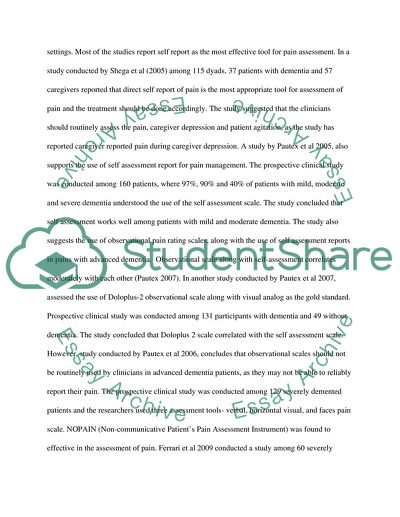Cite this document
(“HOW CAN PAIN BE ASSESSED EFFECTIVELY IN SEVERE DEMENTIA PATIENTS IN Literature review - 1”, n.d.)
HOW CAN PAIN BE ASSESSED EFFECTIVELY IN SEVERE DEMENTIA PATIENTS IN Literature review - 1. Retrieved from https://studentshare.org/nursing/1639019-how-can-pain-be-assessed-effectively-in-severe-dementia-patients-in-hospitals
HOW CAN PAIN BE ASSESSED EFFECTIVELY IN SEVERE DEMENTIA PATIENTS IN Literature review - 1. Retrieved from https://studentshare.org/nursing/1639019-how-can-pain-be-assessed-effectively-in-severe-dementia-patients-in-hospitals
(HOW CAN PAIN BE ASSESSED EFFECTIVELY IN SEVERE DEMENTIA PATIENTS IN Literature Review - 1)
HOW CAN PAIN BE ASSESSED EFFECTIVELY IN SEVERE DEMENTIA PATIENTS IN Literature Review - 1. https://studentshare.org/nursing/1639019-how-can-pain-be-assessed-effectively-in-severe-dementia-patients-in-hospitals.
HOW CAN PAIN BE ASSESSED EFFECTIVELY IN SEVERE DEMENTIA PATIENTS IN Literature Review - 1. https://studentshare.org/nursing/1639019-how-can-pain-be-assessed-effectively-in-severe-dementia-patients-in-hospitals.
“HOW CAN PAIN BE ASSESSED EFFECTIVELY IN SEVERE DEMENTIA PATIENTS IN Literature Review - 1”, n.d. https://studentshare.org/nursing/1639019-how-can-pain-be-assessed-effectively-in-severe-dementia-patients-in-hospitals.


